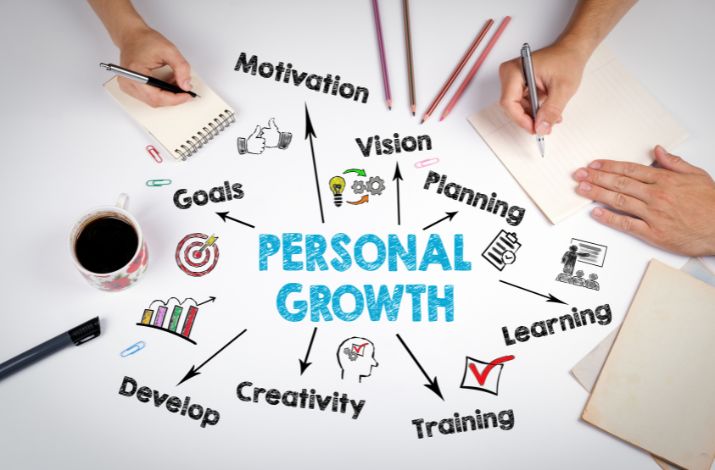Personal development guides people toward a successful outcome, achievement, and improvement in their life path. Just as businesses use strategic plans to achieve their goals, people can greatly gain by developing a personal development plan (PDP). It acts as a guide for self-improvement. It assists people in setting objectives and determining their areas of strength and weakness. It specifies the best path to achieving their greatest potential. This article will explore the methods and techniques for drafting a successful personal development plan.
Personal Development Plan – What is it?
Your objectives, limitations, and strengths are all reflected in your personal development plan. Identifying abilities for personal growth and then clearly defining goals for each are the objectives. They should ideally be measurable, time-bound, short-term objectives. Determine how you’ll advance your talents as part of your plan; examples include internal training, workshops, upgrading their skills, and feedback sessions. Periodically assessing the progress of the action plan, the Personal Development Plan establishes review deadlines. Plans can be made for both the workplace and the individual. Workplace-based plans have a direct influence on career advancement. Both strategies are applicable in both the personal and professional domains.

Steps for Establishing a Personal Development Plan
1- Self-Reflection
The first thing to do as a leader is to evaluate your current circumstances, and self-reflection is also the first stage in developing a personal development plan. To do this, consider your expectations, roles, and duties. Whenever a second opinion is needed, you can also get suggestions from your peers. Methods such as the SWOT analysis and questionnaires for self-assessment can be employed to understand your potential, challenges, and weaknesses as a leader.
Read Also: How the Prodigy Student Login Aids Academic Development
2- Establish Your Objectives
Creating objectives for oneself is the basic step. Consider your goals for the next several weeks or the rest of your life. Not only is choosing what you want. But it’s also the hardest phase in the planning process. Once you’ve determined what you want to do, your goal will give your final strategy a clear direction and a framework. At this point, your objectives will seem lofty. You may be wondering how you’ll ever accomplish them. Don’t worry; the next step will help you reach your goals by helping you prioritize them and break them down into more manageable chunks.
3- Prioritize Your Goals
Decide which goal is more important and why to attain your main objectives. A few short-term objectives are to become an expert in a certain field, study the subject, write blog posts, launch a podcast, conduct interviews, write a book, and give talks at conferences for the industry. To proceed, do research and set priorities for your tasks. For instance, develop a personal development plan, learn from industry experts, and concentrate on a certain niche to become a leader.
4- Determine your Learning Gaps and Needs
Finding your leadership learning gaps and needs is the next phase. Analyzing the abilities, knowledge, and habits you must acquire or enhance to realize your vision and objectives is part of this process. To identify the areas of development that are most pertinent and crucial for you, use techniques like competency frameworks, skill audits, or gap analyses. It would help if you also considered the difficulties and developments your industry and profession are facing now and in the future.
5- Evaluating Resources for the Professional Development Plan
Examine various available resources to ensure your action plan and professional development align. Attending workshops can help you improve your skills. Reading books or taking online courses can help you study more deeply. Participate in professional networks and look for mentorship to obtain insightful advice. Continuing education institutions offer the qualifications required for a promotion in one’s career. Use social media sites like LinkedIn to establish connections with colleagues and widen your professional network. Sort resources according to how well they support your strategy and objectives to get the most out of them for your personal development plan.
6- Creating a Detailed Plan with Deadline
Once your objectives and required skills have been determined, a detailed strategy with deadlines must be created. To reach financial freedom, for example, the plan might include a list of current obligations, budgeting to set aside additional money for debt repayment, starting a debt-paying method from the smallest to the greatest debts, and setting up an emergency fund to prevent debt in the future. Dividing more ambitious objectives into manageable steps improves motivation and makes them more achievable. Every finished step count as a milestone that accelerates development and makes it possible to meet many minor objectives quickly.
Read Also: How to Plan For A Successful Career Change In Nursing
7- Request Support and Feedback
Never be afraid to ask for feedback from those who can provide informative opinions and viewpoints on your development. They are such as mentors, friends, or coworkers. Embrace the company of like-minded people. Who see the best in you and want to see you succeed. Work with others with similar objectives and passions to hold one another accountable and offer assistance.
8- Monitor your Progress
It needs to be simple to monitor your progress and evaluate your current situation if you have your schedule at hand and your SMART goals established. That takes us back to the start because your personal development plan is a lifecycle rather than a linear plan. Remember to update and modify your plan to keep it current. You can only continuously better yourself and advance in your career in this way. Along with adding your objectives, you need to use a goal-setting program that lets you interact with other users and monitor your advancement.
Conclusion
Anyone dedicated to lifelong learning and self-improvement can benefit much from creating a personal development plan. People can map a path to reaching their greatest potential through self-reflection, goal-setting, action planning, progress tracking, and ongoing learning and development. That leading more satisfying lives. Remember that personal development is a process rather than a destination. That approaches it with perseverance, patience, and a growth mentality.






